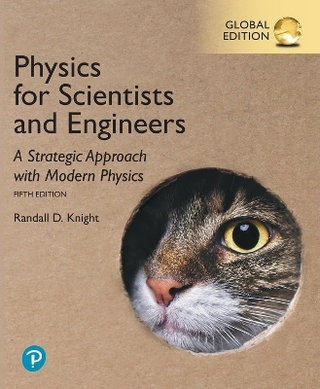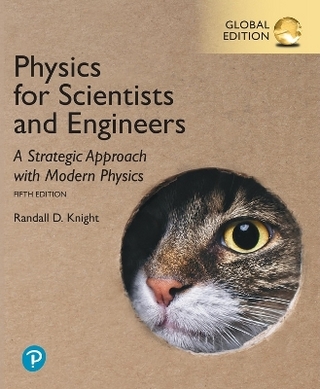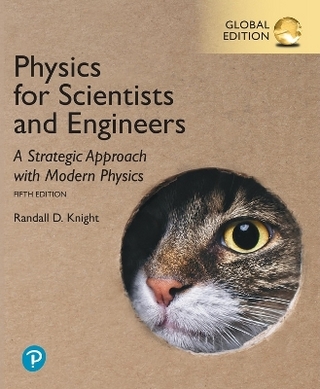
SOI Lubistors – Lateral, Unidirectional, Bipolar–type Insulated–gate Transistors
John Wiley & Sons Inc (Hersteller)
978-1-118-48791-4 (ISBN)
- Keine Verlagsinformationen verfügbar
- Artikel merken
Advanced level consolidation of the technology, physics and design aspects of silicon-on-insulator (SOI) lubistors No comprehensive description of the physics and possible applications of the Lubistor can be found in a single source even though the Lubistor is already being used in SOI LSIs. The book provides, for the first time, a comprehensive understanding of the physics of the Lubistor. The author argues that a clear understanding of the fundamental physics of the pn junction is essential to allowing scientists and engineers to propose new devices. Since 2001 IBM has been applying the Lubistor to commercial SOI LSIs (large scale integrated devices) used in PCs and game machines. It is a key device in that it provides electrostatic protection to the LSIs. The book explains the device modeling for such applications, and covers the recent analog circuit application of the voltage reference circuit. The author also reviews the physics and the modeling of ideal and non-ideal pn junctions through reconsideration of the Shockley s theory, offering readers an opportunity to study the physics of pn junction.
Pn-junction devices are already applied to the optical communication system as the light emitter and the receiver. Alternatively, optical signal modulators are proposed for coupling the Si optical waveguide with the pn-junction injector. The book also explores the photonic crystal physics and device applications of the Lubistor. * Advanced level consolidation of the technology, physics and design aspects of silicon-on-insulator (SOI) lubistors * Written by the inventor of the Lubistor, this volume describes the technology for readers to understand the physics and applications of the device * First book devoted to the Lubistor transistor, presently being utilized in electrostatic discharge (ESD) applications in SOI technology, a growing market for semiconductor devices and advanced technologies * Approaches the topic in a systematic manner, from physical theory, through to modelling, and finally circuit applications This is an advanced level book requiring knowledge of electrical and electronics engineering at graduate level.
Contents includes: Concept of Ideal pn Junction/Proposal of Lateral, Unidirectional, Bipolar-Type Insulated-Gate Transistor (Lubistor)/ Noise Characteristics and Modeling of Lubistor/Negative Conductance Properties in Extremely Thin SOI Lubistors/ Two-Dimensionally Confined Injection Phenomena at Low Temperatures in Sub-10-nm-Thick SOI Lubistors/ Experimental Study of Two-Dimensional Confinement Effects on Reverse-Biased Current Characteristics of Ultra-Thin SOI Lubistors/ Gate-Controlled Bipolar Action in Ultra-thin Dynamic Threshold SOI MOSFET/Sub-Circuit Models of SOI Lubistors for Electrostatic Discharge Protection Circuit Design and Their Applications/A New Basic Element for Neural Logic Functions and Functionality in Circuit Applications/Possible Implementation of SOI Lubistors into Conventional Logic Circuits/Potentiality of Electro-Optic Modulator Based on SOI Waveguide/Principles of Parameter Extraction/Feasibility of Lubistor-Based Avalanche Photo Transistor
Professor Yasuhisa Omura, Department of Electric, Electronics and Information Engineering, ?Kansai University, Osaka, Japan Professor Omura obtained his Ph D in Engineering from Kyushu University, Japan, in 1984, having been awarded Young Researcher Award (for the proposal of the Lubistor) from IEICE, Japan the previous year. Since inventing the Lubistor in 1982, he has published 12 papers and 10 conference papers characterizing its operation, its physics, and possible applications, in addition to almost 300 published articles and conference papers on other area of interest, including physics-based device modeling and photonic crystal design and propagation mode control.?He has been an IEEE Fellow since 2010.
Preface xiii Acknowledgements xv Introduction to an Exotic Device World xvii Part One BRIEF REVIEWAND MODERN APPLICATIONS OF PN-JUNCTION DEVICES 1 Concept of an Ideal pn Junction 3 References 4 2 Understanding the Non-ideal pn Junction Theoretical Reconsideration 7 2.1 Introduction 7 2.2 Bulk pn-Junction Diode 8 2.2.1 Assumptions 8 2.2.2 Model A Low Doping Case 9 2.2.3 Model B High Doping Case 18 2.3 Bulk pn-Junction Diode Reverse Bias 24 2.3.1 Model A Low Doping Case 24 2.3.2 Model B High Doping Case 25 2.4 The Insulated-Gate pn Junction of the SOI Lubistor Forward Bias 32 2.4.1 The Positive Gate Voltage Condition 32 2.4.2 The Negative Gate Voltage Condition 35 2.5 The Insulated-Gate pn Junction of the SOI Lubistor Reverse Bias 35 References 37 3 Modern Applications of the pn Junction 39 References 40 Part Two PHYSICS AND MODELING OF SOI LUBISTORS THICK-FILM DEVICES 4 Proposal of the Lateral, Unidirectional, Bipolar-Type Insulated-Gate Transistor (Lubistor) 43 4.1 Introduction 43 4.2 Device Structure and Parameters 43 4.3 Discussion of Current Voltage Characteristics 45 4.4 Summary 47 References 47 5 Experimental Consideration for Modeling of Lubistor Operation 49 5.1 Introduction 49 5.2 Experimental Apparatus 49 5.3 Current Voltage Characteristics of Lubistors 52 5.4 Lubistor Potential Profiles and Features 56 5.5 Discussion 57 5.5.1 Simplified Analysis of Lubistor Operation 57 5.5.2 On the Design of Lubistors 60 5.6 Summary 61 References 61 6 Modeling of Lubistor Operation Without an EFS Layer for Circuit Simulations 63 6.1 Introduction 63 6.2 Device Structure and Measurement System 63 6.3 Equivalent Circuit Models of an SOI Lubistor 65 6.3.1 Device Simulation 65 6.3.2 Equivalent Circuit Models 68 6.4 Summary 72 References 73 7 Noise Characteristics and Modeling of Lubistor 75 7.1 Introduction 75 7.2 Experiments 75 7.2.1 Device Structure 75 7.2.2 Measurement System 77 7.3 Results and Discussion 77 7.3.1 I V Characteristics of an SOI Lubistor and a Simple Analytical Model 77 7.3.2 Noise Spectral Density of SOI Lubistors and Their Feature 81 7.3.3 Advanced Analysis of Anode Noise Spectral Density 83 7.4 Summary 86 References 86 8 Supplementary Study on Buried Oxide Characterization 89 8.1 Introduction 89 8.2 Physical Model for the Transition Layer 90 8.3 Capacitance Simulation 93 8.3.1 A Structure to Evaluate Capacitance 93 8.3.2 Numerical Simulation Technique 94 8.4 Device Fabrication 95 8.5 Results and Discussion 96 8.5.1 Electrode-to-Electrode Capacitance Dependence on Frequency 96 8.5.2 Drain-to-Substrate Capacitance Dependence on Bias 98 8.5.3 Electrode-to-Electrode Capacitance Dependence on Transition Layer Thickness 101 8.6 Summary 101 References 102 Part Three PHYSICS AND MODELING OF SOI LUBISTORS THIN-FILM DEVICES 9 Negative Conductance Properties in Extremely Thin SOI Lubistors 105 9.1 Introduction 105 9.2 Device Fabrication and Measurements 105 9.3 Results and Discussion 106 9.4 Summary 109 References 109 10 Two-Dimensionally Confined Injection Phenomena at Low Temperatures in Sub-10-nm-Thick SOI Lubistors 111 10.1 Introduction 111 10.2 Experiments 111 10.2.1 Anode Common Configuration 113 10.2.2 Cathode Common Configuration 113 10.3 Physical Models and Simulations 114 10.3.1 Fundamental Models 114 10.3.2 Theoretical Simulations 118 10.3.3 Influences on Characteristics of Extremely Ultra-Thin SOI MOSFET Devices 122 10.4 Summary 122 Appendix 10A: Intrinsic Carrier Concentration (niq) and the Fermi Level in 2DSS 122 Appendix 10B: Calculation of Electron and Hole Densities in 2DSS 125 References 125 11 Two-Dimensional Quantization Effect on Indirect Tunneling in SOI Lubistors with a Thin Silicon Layer 127 11.1 Introduction 127 11.2 Experimental Results 128 11.2.1 Junction Current Dependence on Anode Voltage 128 11.2.2 Junction Current Dependence on Gate Voltage 132 11.3 Theoretical Discussion 134 11.3.1 Qualitative Consideration of the Low-Dimensional Indirect Tunneling Process 134 11.3.2 Theoretical Formulations of Tunneling Current and Discussion 134 11.4 Summary 140 Appendix 11A: Wave Function Coupling Effect in the Lateral Two-Dimensional-System-to-Three-Dimensional-System (2D-to-3D) Tunneling Process 141 References 141 12 Experimental Study of Two-Dimensional Confinement Effects on Reverse-Biased Current Characteristics of Ultra-Thin SOI Lubistors 143 12.1 Introduction 143 12.2 Device Structures and Experimental Apparatus 144 12.3 Results and Discussion 145 12.3.1 I V Characteristics under the Reverse-Biased Condition 145 12.4 Summary 151 Appendix 12A: Derivation of Equations (12.6) and (12.9) 151 References 153 13 Supplementary Consideration of I-V Characteristics of Forward-Biased Ultra-Thin Lubistors 155 13.1 Introduction 155 13.2 Device Structures and Bias Configuration 155 13.3 Results and Discussion 156 13.4 Summary 157 References 158 14 Gate-Controlled Bipolar Action in the Ultra-Thin Dynamic Threshold SOI MOSFET 159 14.1 Introduction 159 14.2 Device and Experiments 159 14.3 Results and Discussion 159 14.3.1 ID VG and IG VG Characteristics of the Ultra-Thin-Body DT-MOSFET 159 14.3.2 Control of Bipolar Action by the MOS Gate 162 14.4 Channel Polarity Dependence of Bipolar Action 162 14.4.1 ID VG and gm VG Characteristics of the Ultra-Thin-Body DT-MOSFET 162 14.4.2 Difference of Bipolar Operation between the n-Channel DT-MOS and the p-Channel DT-MOS 163 14.4.3 Impact of Body Thickness on Bipolar Operation 164 14.5 Summary 166 References 166 15 Supplementary Study on Gate-Controlled Bipolar Action in the Ultra-Thin Dynamic Threshold SOI MOSFET 167 15.1 Introduction 167 15.2 Device Structures and Parameters 167 15.3 Results and Discussion 169 15.3.1 SOI MOSFET Mode and DT-MOSFET Mode 169 15.3.2 Temperature Evolution of Transconductance (gm) Characteristics and Impact of Channel Length on gm Characteristics 170 15.3.3 Impact of SOI Layer Thickness on gm Characteristics 173 15.4 Summary 173 References 174 Part Four CIRCUIT APPLICATIONS 16 Subcircuit Models of SOI Lubistors for Electrostatic Discharge Protection Circuit Design and Their Applications 179 16.1 Introduction 179 16.2 Equivalent Circuit Models of SOI Lubistors and their Applications 180 16.2.1 Device Structure and Device Simulation 180 16.2.2 Equivalent Circuit Models 183 16.3 ESD Protection Circuit 183 16.4 Direct Current Characteristics of the ESD Protection Devices and Their SPICE Models 186 16.5 ESD Event and Performance Evaluation of an ESD Protection Circuit 189 16.6 Summary 196 References 196 17 A New Basic Element for Neural Logic Functions and Capability in Circuit Applications 199 17.1 Introduction 199 17.2 Device Structure, Model, and Proposal of a New Logic Element 199 17.2.1 Device Structure and Fundamental Characteristics 199 17.2.2 Device Model for the Lubistor 201 17.2.3 Proposal of a New Logic Element 203 17.3 Circuit Applications and Discussion 206 17.3.1 Examples of Fundamental Elements for Circuit Applications 206 17.3.2 On the Further Improvement of Functions of the Basic Logic Element 211 17.4 Summary 211 References 211 18 Sub-1-V Voltage Reference Circuit Technology as an Analog Circuit Application 213 18.1 Review of Bandgap Reference 213 18.2 Challenging Study of Sub-1-V Voltage Reference 214 References 215 19 Possible Implementation of SOI Lubistors into Conventional Logic Circuits 217 References 218 Part Five OPTICAL DEVICE APPLICATIONS OF SOI LUBISTORS 20 Potentiality of Electro-Optic Modulator Based on the SOI Waveguide 223 20.1 Introduction 223 20.2 Characterization of the Quasi-One-Dimensional Photonic Crystal Waveguide 224 20.3 Electro-Optic Modulator Based on the SOI Waveguide 230 20.4 Summary 233 References 234 Part Six SOI LUBISTOR AS A TESTING TOOL 21 Principles of Parameter Extraction 237 References 239 22 Charge Pumping Technique 241 22.1 Introduction 241 22.2 Experimental and Simulation Details 241 22.3 Results and Discussion 243 22.4 Summary 246 References 246 Part Seven FUTURE PROSPECTS 23 Overview 249 23.1 Introduction 249 23.2 i-MOS Transistor 249 23.3 Tunnel FET 251 23.4 Feedback FET 254 23.5 Potential of Offset-Gate Lubistor 256 23.6 Si Fin LED with a Multi-quantum Well 258 23.7 Future of the pn Junction 258 References 259 24 Feasibility of the Lubistor-Based Avalanche Phototransistor 261 24.1 Introduction 261 24.2 Theoretical Formulation of the Avalanche Phenomenon in Direct-Bandgap Semiconductors 261 24.3 Theoretical Formulation of the Avalanche Phenomenon in Indirect-Bandgap Semiconductors 264 24.4 Theoretical Consideration of the Avalanche Phenomenon in a One-Dimensional Wire pn Junction 265 24.5 Summary 269 References 269 Part Eight SUMMARY OF PHYSICS FOR SEMICONDUCTOR DEVICES AND MATHEMATICS FOR DEVICE ANALYSES 25 Physics of Semiconductor Devices for Analysis 273 25.1 Free Carrier Concentration and the Fermi Level in Semiconductors 273 25.2 Impurity Doping in Semiconductors 275 25.3 Drift and Diffusion of Carriers and Current Continuity in Semiconductors 275 25.4 Stationary-State Schr odinger Equation to Analyze Quantum-Mechanical Effects in Semiconductors 276 25.5 Time-dependent Schr odinger Equation to Analyze Dynamics in Semiconductors 277 25.6 Quantum Size Effects in Nano-Scale Semiconductors 278 25.7 Tunneling through Energy Barriers in Semiconductors 281 25.8 Low-Dimensional Tunneling in Nano-Scale Semiconductors 282 25.9 Photon Absorption and Electronic Transitions 284 25.9.1 Fundamental Formulations 284 25.9.2 Interband Transition Direct Bandgap 285 25.9.3 Interband Transition Indirect Bandgap 286 References 287 26 Mathematics Applicable to the Analysis of Device Physics 289 26.1 Linear Differential Equation 289 26.2 Operator Method 290 26.3 Klein Gordon-Type Differential Equation 291 References 292 Bibliography 293 Index 295
| Verlagsort | New York |
|---|---|
| Sprache | englisch |
| Maße | 150 x 250 mm |
| Gewicht | 666 g |
| Themenwelt | Naturwissenschaften ► Physik / Astronomie |
| Technik ► Elektrotechnik / Energietechnik | |
| ISBN-10 | 1-118-48791-5 / 1118487915 |
| ISBN-13 | 978-1-118-48791-4 / 9781118487914 |
| Zustand | Neuware |
| Haben Sie eine Frage zum Produkt? |
aus dem Bereich


